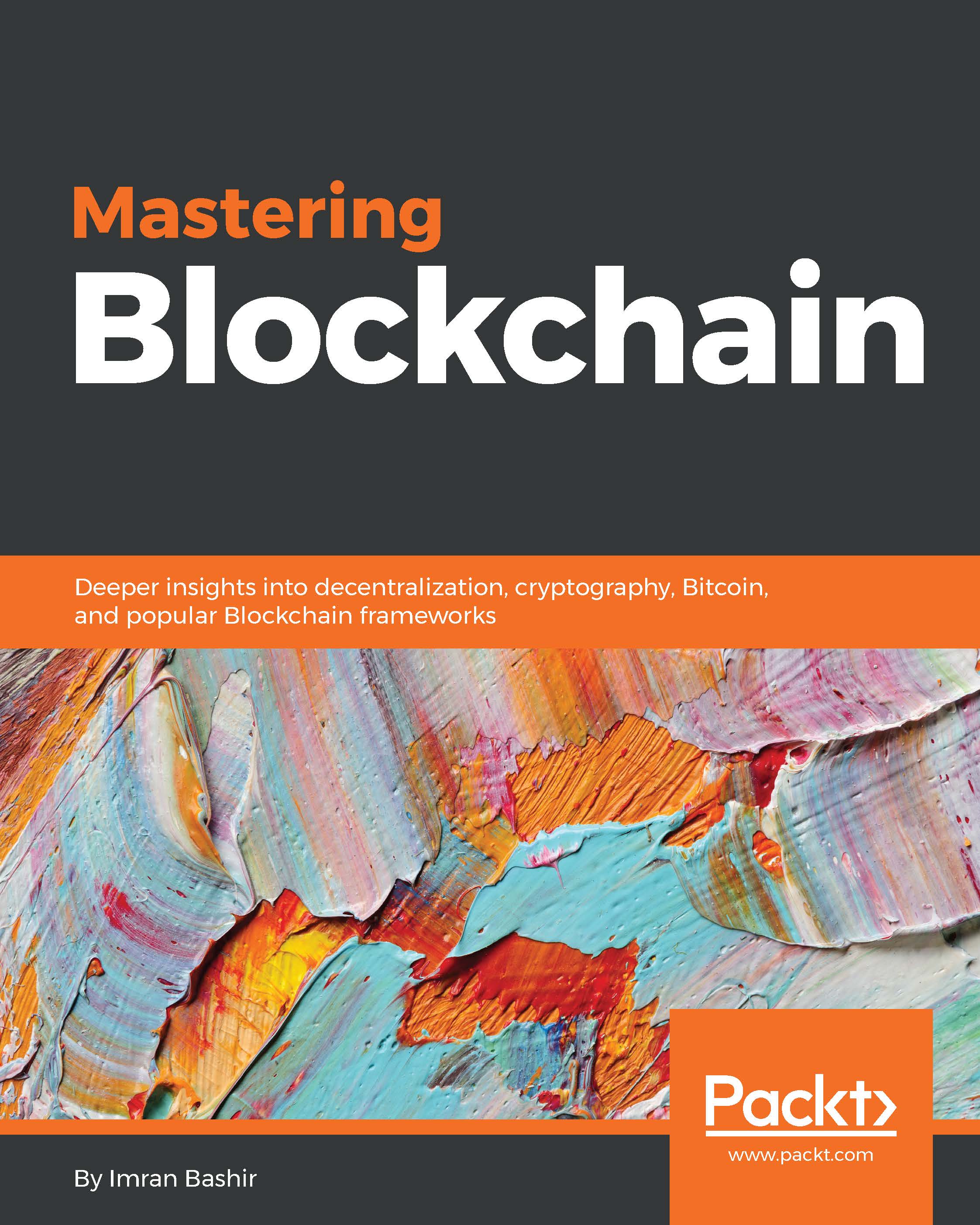-
Book Overview & Buying

-
Table Of Contents

Mastering Blockchain
By :

Mastering Blockchain
By:
Overview of this book
 Free Chapter
Free Chapter
 Sign In
Start Free Trial
Sign In
Start Free Trial

 Free Chapter
Free Chapter
It is very likely that anyone reading this book has already heard about blockchain and has some basic appreciation of its enormous potential.
With the invention of bitcoin in 2008 the world was introduced to a new concept that is now likely to revolutionize the whole of society. It's something that has promised to impact every industry including but not limited to finance, government, and media. Some describe it as a revolution whereas another school of thought says that it's going to be an evolution and it will take many years before any practical benefits from blockchain come to fruition. This is correct to some extent but in my opinion the revolution has already started; many big organizations all around the world are already writing proofs of concept using blockchain technology as its disruptive potential has now been fully recognized. However, some organizations are still at the preliminary exploration stage but are expected to progress more quickly as the technology is now becoming more mature. It is a technology that has an impact on current technologies too and possesses the ability to change them at a fundamental level.
According to Gartner's technology hype cycle graph shown below, the blockchain technology is currently at the peak of inflated expectations (as of July 2016) and is expected to be ready for mainstream adoption in 5 to 10 years:

Gartner's hype cycle for emerging technologies
Interest in blockchain technology has soared in the last few years and, once disregarded by some as geek money from a cryptocurrency point of view or as something that was not really considered worthwhile, it is now being researched by the largest companies and organizations around the world with millions of dollars being spent in order to adopt and experiment with this technology. A simple trend search on Google reveals the scale of interest in the blockchain technology over the last few years:

Google trends for blockchain
Various benefits of this technology are being envisaged such as decentralized trust, cost savings, transparency, and efficiency. However, there are various challenges too that are an area of active research such as scalability and privacy. Chapter 12, Scalablity and Other Challenges is dedicated to a discussion of the limitations and challenges of blockchain technology.
This chapter is an introduction to blockchain technology, its technical foundations, the theory behind it, and various technologies that have been combined together in order to build what is known today as blockchain.
In 2008 a groundbreaking paper Bitcoin: A Peer-to-Peer Electronic Cash System was written on the topic of peer-to-peer electronic cash under the pseudonym Satoshi Nakamoto and introduced the term chain of blocks. This term over the years has now evolved into the word blockchain.
In this chapter, first the theoretical foundations of distributed systems are described, then the precursors of bitcoin (with which blockchain technology was introduced) such as e-cash and hashcash, and then finally the blockchain technology is introduced. This is a logical way of understanding blockchain technology because the roots of blockchain are in distributed systems.
